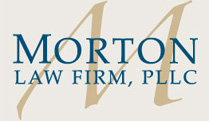Fifth Circuit Reverses Tax Court in McCord: Gifting Using Formula Clauses
This article examines the appeal of the McCord decision, in which the Fifth Circuit reversed the Tax Court decision and allowed formula value clauses. The decision allows you to tie the amount of the gift to the value of the underlying asset, such as an FLP interest. So, it could say, I give $1 million worth of my FLP to my children and the amount over that to charity.
In a unanimous decision that was nearly three years in the making, the Fifth Circuit
Court of Appeals in McCord v. Commissioner, Docket No. 03-60700 (5th
Cir. August 22, 2006) reversed the Tax Court’s disregard of a formula value
to assign ownership interests in a family limited partnership.
The McCords formed McCord Interests, Ltd., L.L.P., a Texas family limited partnership
on June 30, 1995. Mr. and Mrs. McCord, who were in their 80’s when the
FLP was formed, exchanged the property contributed to the FLP in exchange for
all of the Class A FLP interests and 82+% of the Class B FLP interests. The
McCord children, who were in their 50’s and 60’s, were the initial
general partners of the FLP. A partnership owned by the McCord children was
the owner of the remainder of the Class B FLP interests.
The property initially put into the Partnership consisted of marketable securities
(65%) and interests in real estate limited partnerships (30%), with the balance
consisting of direct real estate holdings and some direct and indirect oil and
gas holdings. In November 1995, the McCords donated their Class A interests
to a charitable school foundation, and all of the partners agreed to admit the
foundation as a partner.
On January 12, 1996, the McCords assigned all of their Class B interests pursuant
to a formula gift assignment. The formula assignment provided that an amount
of the FLP interests equal to the McCord’s unused GST exemption amount
was assigned to several GST Trusts created by the McCords; any excess over this
GST amount, but not more than $6,910,932.52, was assigned outright and in equal
shares to the McCord children; any excess over $6,910,932.52, but not more than
$7,044,932.52 was assigned to the Shreveport Symphony, Inc.; and any remaining
portion of the FLP interests was assigned to the charitable school foundation.
The partners did not admit the charitable assignees named in the donation as
partners in the FLP.
Subsequent to the assignment of the FLP interests by formula clause, all of
the donees of the Class B FLP interests also entered into an agreement confirming
their ownership interests and sharing ratios in the McCord FLP amongst themselves,
effectively converting the fixed dollar amounts in the assignment into percentage
ownership interests that were retroactive to the effective date of the distribution.
The IRS audited the gift tax returns and assessed a higher value on two fronts.
First, the Service disallowed the actuarial reduction in the amount of the gift
that the McCords had taken pursuant to the potential increase in the McCords’
taxable estates under IRC § 2035(b). This issue is beyond the scope of
this alert. Second, the IRS asserted that the value of the partnership interests
as shown on the gift tax returns was too low.
The Tax Court deftly avoided having to determine the validity of the formula
assignment based on the numerous public policy and other arguments put forth
by the IRS and the McCords’ counsel, instead concluding that the formula
gift made by the McCords must fail because the formula did not define “fair
market value” as “fair market value as finally determined for Federal
gift tax purposes.” The Tax Court majority seemed to place excessive importance
upon the fact that a percentage ownership interest for each partner was fixed
by an agreement between the partners and not by the assignment itself. The minority
found this logic to be very strained, with Judge Chiechi stating: [t]he majority’s
construction . . . is strained, unreasonable, and improper and leads to illogical
results. Judge Laro, dissenting on different grounds, also found fault with
the majority’s hair-splitting, noting:
[t]o my mind, the subject property’s fair market value is its fair market
value, notwithstanding whether fair market value is ascertained by the parties
or “finally determined for Federal gift tax purposes.” I know of
nothing in the tax law (nor has the majority mentioned anything) that provides
that property such as the subject property may on the same valuation date have
one “fair market value” when “finally determined” and
a totally different “fair market value” if ascertained beforehand.
The majority’s interpretation of the assignment agreement is at odds with
the interpretation given that agreement by not only the trial judge, but by
both parties as well.
The Fifth Circuit was very critical of the majority opinion on the formula
gift issue, stating:
[t]he Majority’s key legal error was its confecting sua
sponte its own methodology for determining the taxable or deductible values
of each donee’s gift valuing for tax purposes here. This core flaw in
the Majority’s inventive methodology was its violation of the long-prohibited
practice of relying on post-gift events. Specifically, the Majority used the
after-the-fact Confirmation Agreement to mutate the Assignment Agreement’s
dollar-value gifts into percentage interests in [the FLP]. It is clear beyond
cavil that the Majority should have stopped with the Assignment Agreement’s
plain wording. By not doing so, however, and instead continuing on to the post-gift
Confirmation Agreement’s intra-donee concurrence on the equivalency of
dollars to percentage of interests in [the FLP], the Majority violated the firmly-established
maxim that a gift is valued as of the date that it is complete; the flip side
of that maxim is that subsequent occurrences are off limits.
What does this pivotal case mean for estate planning attorneys? Our firm believes
that simple, properly structured defined value gift formulas can be safely used
in structuring gifts and sales to individuals and trusts. An example of this
type of formula might be:
Clients assign their 89% undivided ownership interest in the Doe Family Limited
Partnership (“Doe FLP”) as follows: to the Doe Irrevocable Trust
dated January 3, 2001 that percentage ownership in the Doe FLP, as finally determined
for federal gift tax purposes, that is equal to $1,000,000 and to ABC Charity
that percentage interest of the Doe FLP in excess of such amount.
By using a simple formula such as this, any increase in the valuation of the
gift by the IRS at audit will result in an increase in the percentage of the
Doe FLP assigned to the ABC charity. Since the IRS will receive no additional
gift tax as the result of the increase in the gift to charity, the IRS has a
disincentive to aggressively pursue a redetermination of the value of the partnership
as shown on the federal gift tax return.









Sorry, comments for this entry are closed at this time.